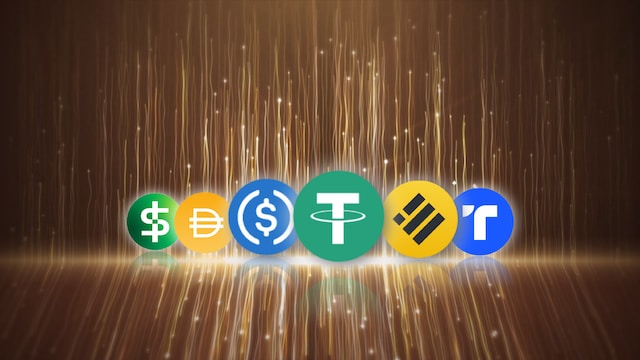In recent years, cryptocurrencies have taken the financial world by storm. Bitcoin, the first decentralized cryptocurrency, launched in 2009, and since then, hundreds of other digital currencies have emerged. While cryptocurrencies offer many advantages, such as fast and cheap cross-border transactions, they are also highly volatile. Their value can fluctuate wildly in a matter of hours, making them unsuitable for many use cases, such as savings accounts or everyday transactions. Enter stablecoins, a type of cryptocurrency designed to maintain a stable value. In this guide, we’ll explore how stablecoins work, their benefits and drawbacks, and the different types of stablecoins available.
How Do Stablecoins Work?
Stablecoins are designed to maintain a stable value against a specific asset, such as a fiat currency (e.g., USD, EUR), gold, or a basket of cryptocurrencies. They achieve this stability through various mechanisms, such as collateralization, algorithmic stabilization, or a combination of both.
Collateralized Stablecoins
Collateralized stablecoins are backed by a reserve of assets, usually fiat currencies or cryptocurrencies, that are held in a custodial account. The amount of reserve is usually equal to or greater than the number of stablecoins in circulation, ensuring that there is always enough collateral to redeem the stablecoins for their underlying asset.
The most popular collateralized stablecoin is Tether (USDT), which is pegged to the US dollar. For every USDT token in circulation, there is supposed to be an equivalent amount of USD held in reserve. However, Tether has faced controversy over its lack of transparency and accusations that it does not hold sufficient reserves.
Other popular collateralized stablecoins include USD Coin (USDC), TrueUSD (TUSD), and Paxos Standard (PAX).
Algorithmic Stablecoins
Algorithmic stablecoins, also known as seigniorage-style stablecoins, do not rely on a reserve of assets but rather on an algorithm that adjusts the supply of stablecoins based on market demand. When the price of the stablecoin rises above its target value, the algorithm mints new tokens, increasing the supply and bringing the price back down. Conversely, when the price falls below its target value, the algorithm burns tokens, reducing the supply and increasing the price.
The most famous algorithmic stablecoin is Dai, which is pegged to the US dollar and backed by collateral in the form of Ethereum. Dai is created when users lock up Ethereum as collateral and borrow Dai against it. The interest paid on the borrowed Dai is used to stabilize the price of Dai by buying and selling it on the open market.
Other examples of algorithmic stablecoins include Ampleforth (AMPL), Basis Cash (BAC), and Frax (FRAX).
Hybrid Stablecoins
Hybrid stablecoins combine elements of both collateralized and algorithmic stablecoins. They are backed by a reserve of assets but also use an algorithm to adjust the supply of stablecoins based on market demand. This approach aims to provide the stability of collateralized stablecoins while also allowing for more flexibility in supply and demand.
One example of a hybrid stablecoin is TerraUSD (UST), which is pegged to the US dollar and backed by a reserve of cryptocurrencies, including Bitcoin, Ethereum, and Terra (LUNA).
Benefits and Drawbacks of Stablecoins
Benefits of Stablecoins
Stablecoins offer several benefits over traditional cryptocurrencies, including:
- Stability: Stablecoins offer a predictable and stable value, making them a suitable option for everyday transactions, savings accounts, and other use cases that require a reliable store of value.
- Cross-border transactions: Stablecoins enable fast, cheap, and borderless transactions, without the need for intermediaries such as banks or payment processors. This makes them an attractive option for remittances and cross-border commerce.
- Accessibility: Anyone with an internet connection can use stablecoins, regardless of their location, income, or banking status. This can be particularly beneficial for people in countries with unstable currencies, limited access to banking services, or high remittance fees.
Drawbacks of Stablecoins
While stablecoins offer many benefits, they also come with some drawbacks, such as:
- Centralization: Most stablecoins rely on a central authority, such as a custodian, an issuer, or a governance system, which can pose risks such as censorship, fraud, or manipulation.
- Counterparty risk: Collateralized stablecoins carry counterparty risk, which means that the value of the stablecoin depends on the solvency and transparency of the custodian or issuer. In the event of a default or insolvency, the stablecoin holders may not be able to redeem their tokens for their underlying asset.
- Algorithmic risk: Algorithmic stablecoins carry algorithmic risk, which means that the stability of the stablecoin depends on the accuracy and resilience of the algorithm. If the algorithm is flawed, hacked, or manipulated, the stablecoin can become unstable or collapse.
FAQs about Stablecoins
Are stablecoins a type of cryptocurrency?
What assets can stablecoins be pegged to?
Can stablecoins be used for everyday transactions?
Are stablecoins regulated?
What are the risks of using stablecoins?
Conclusion
Stablecoins are a promising innovation that offers stability, speed, and accessibility in the world of digital currencies. They have many use cases, from everyday transactions to savings accounts and cross-border payments. However, they also come with some risks and drawbacks, such as centralization, counterparty risk, and algorithmic risk. As with any financial instrument, it’s essential to do your research and understand the risks before investing in or using stablecoins.
Notice: Information contained herein is not and should not be construed as an offer, solicitation, or recommendation to buy or sell securities. The information has been obtained from sources we believe to be reliable; however, no guarantee is made or implied with respect to its accuracy, timeliness, or completeness. Authors may own the cryptocurrency they discuss. The information and content are subject to change without notice. Visionary Financial and its affiliates do not provide investment, tax, legal, or accounting advice.
This material has been prepared for informational purposes only and is the opinion of the author, and is not intended to provide, and should not be relied on for, investment, tax, legal, accounting advice. You should consult your own investment, tax, legal, and accounting advisors before engaging in any transaction. All content published by Visionary Financial is not an endorsement whatsoever. Visionary Financial was not compensated to submit this article. Please also visit our Privacy policy; disclaimer; and terms and conditions page for further information.

